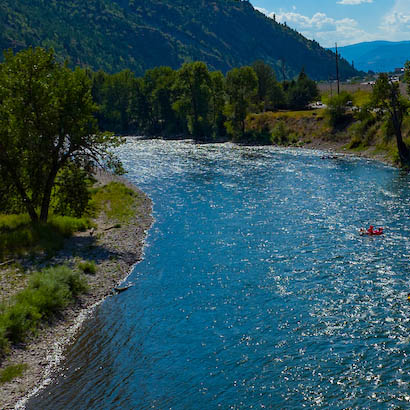Project Overview
Overview
This project started in the summer of 2016 with financial support from the USDA NIFA Water for Agriculture Program, contract #2016-67026-25067 and NASA EPSCoR, contract #80NSSC18M0025M. In the course of the project we are producing innovative decision support systems for water management that will help decision-makers understand the consequences of climate variability, policy action, and market fluctuations on the regional water demand and supply system.
Objectives
Understanding how farmers adapt to changing natural conditions is critical for developing efficient policies to support producer welfare, enhance food security, and protect the environment. The objective of this project is to develop a transformative decision support tool that will allow policymakers and natural resource managers to understand the incentives that drive farmers’ adaptation to changing natural conditions, as well as the environmental consequences of adaptive behavior. For this we are partnering with the Water Resources Division of the Montana Department of Natural Resources and Conservation (DNRC) to produce advanced water management tools that could be use for continuous and operational large scale (state-wide) water management.
The goals of this project contribute to the USDA-NIFA strategic objective to develop solutions for water management that link food, water, climate, and environmental factors using holistic approaches that link social, economic, behavioral, and biophysical sciences and engineering. Our methods will address the following questions:
- How do extreme climatic events, especially droughts, affect crop mix and land use devoted to agriculture?
- How does agricultural change impact water availability and other water users?
- How vulnerable are agricultural systems to extreme climatic events and to what extent can they absorb the negative impacts of global change?
- How do a diverse range of famers respond to extreme climatic events or to water policy, including changes in water prices, water availability, government incentives and subsidies, and how can we predict their behavior with sufficient accuracy? What choices and management practices are prioritized, and how can that inform future policy options?
- How can a diverse range of stakeholders mitigate the negative effects of extreme climatic events, such as impoverishment of agricultural regions, deterioration or overuse of water resources, risks of monoculture, regional dependence on global food markets, and food insecurity?
To do so, we propose a state-of-the-art integrated hydro-economic model that leverages recent advances in remote sensing science and in data assimilation methods to enable automatic model updates and refinements as new information on farming activity becomes available.
